278 posts
Latest Posts by glitches25 - Page 7










There sure are some strange creatures out there.
Roughly 2 and a half hours or less for each of these, except for Pheromosa who clocked in at 3:35 because I kept changing my mind along the way.


See hi-res version here: patreon.com/posts/117354690
Was discussing the Ultra Beast thing with a friend and I also recently finished watching 'Smiling Friends' so my brain just went to this XD A more angsty/weird/wholesome piece is coming up too that same friend and I also were diving into, but this idea hit me first.






They say the mustang is the spirit of the West. Whether that west was won or lost in the end, you'll have to decide for yourself, but the story I want to tell you is true. I was there and I remember. I remember the sun, the sky, and the wind calling my name in a time when wild horses ran free.
SPIRIT: STALLION OF THE CIMARRON 2002, dir. Kelly Asbury, Lorna Cook







Long-armed scarab, Cheirotonus gestroi, Scarabaeidae
Found in Southeast Asia, this species is considered endangered
Photo 1 by malacoderm, 2-3 by maxnuraliev, 4-5 by tang-xiaopang, and 6 (female on top and male below) by fernwild
The more I think about Mr Ring-A-Ding the more I consider that he was, in so many ways, NOT maleviolent. By which I mean The Toymaker, The Maestro, and Sutekh all wanted to harm humanity or the universe. Meanwhile, Mr Ring-A-Ding did not kill and he was content to stay in the theatre watching movies every night for five months, reanimating one old man's dead wife or playing like he did. But he was dangerous and he was dangerous because he didn't care enough about the people he interacted with. They made him laugh or didn't understand or threatened him so he trapped them in terror in film, destroyed familes, didn't care. And when he realised he could get bigger and more powerful why not? Nobody and nothing else mattered but what he wanted. Like a child emperor with manifest power to get everything and anything he wanted.
And I think the point of this is to say that the pantheon are not all evil, they're not all bent on domination and destruction, some of them are just after their own whims but with the power that they do have and the lack of care - those whims are dangerous.

you have no idea how hyped i am for the new episode



DOCTOR WHO — LUX (S41E02) ››› Alan Cumming as Mr. Ring-a-Ding / Lux Imperator









A rubberhose cartoon in a dapper costume who dances and cause problems for humans after being brought to life?
Oh, this episode was made for me!
I absolutely love Mr Ring-a-Ding, and I just had to draw Bendy based on some screenshots I took from some gif sets and such!


dbqq — enasona (fugi)
flightless bird.
i implore you all to look at the waterlogged project on inaturalist. check this shit out









(1, 2, 3, 4, 5, 6, 7, 8, 9)
I wish the woolly chafer beetle was as big as a rabbit and I could have one as a pet




Round 3 - Reptilia - Charadriiformes




(Sources - 1, 2, 3, 4)
Our next order of birds are the diverse Charadriiformes, collectively called “shorebirds”. This large order contains the families Burhinidae (“stone-curlews” and “thick-knees”), Pluvianellidae (“Magellanic Plover”), Chionidae (“sheathbills”), Pluvianidae (“Egyptian Plover”), Charadriidae (“plovers”), Recurvirostridae (“stilts” and “avocets”), Ibidorhynchidae (“Ibisbill”), Haematopodidae (“oystercatchers”), Rostratulidae (“painted-snipes”), Jacanidae (“jacanas”), Pedionomidae (“Plains-wanderer”), Thinocoridae (“seedsnipes”), Scolopacidae (“sandpipers”, “snipes”, “curlew”, and kin), Turnicidae (“buttonquails”), Dromadidae (“Crab-plover”), Glareolidae (“coursers” and “pratincoles”), Laridae (“gulls”, “terns”, “skimmers”, and kin), Stercorariidae (“skuas”), and Alcidae (“auks”, “puffins”, “guillemots”, and kin).
Charadriiformes are small to medium-large birds that typically live near water, however, some live in the open sea, some live in dense forest, and some living in deserts. Most eat small animals ranging from invertebrates to fish to other birds. The order was formerly divided into three suborders based on behavior, the “waders”, the “gulls”, and the “auks”, but these three groups were paraphyletic. However, they represent a good summary of the main forms charadriiformes can take. The “waders” are generally long-legged, long-beaked birds which tend to feed by probing in the mud or picking items off the surface in both coastal and freshwater environments (however, terrestrial shorebirds like the Woodcock [Scolopax minor] and thick-knees [family Burhinidae] would also be considered “waders”). The “gulls” are generally larger species which catch fish from the sea, scavenge, or steal food from other animals. The “auks” are coastal species which nest on sea cliffs and dive underwater to catch fish, on flipper-like wings that can swim as well as fly. Now, it is generally understood that the auks are closer related to the gulls than any other family, and birds traditionally considered “waders” exist in all three suborders. Charadriiformes are one of the most, if not the most, widely dispersed bird orders, living on every continent and in almost every habitat.
Charadriiformes demonstrate a larger diversity of reproduction strategies than do most other bird orders (see propaganda below the cut for more). In most species, both parents take care of the young, but in some, the father is the main caretaker. Some breed and raise young in large colonies, while others nest alone.
Alongside the waterfowl, the Charadriiformes are the only other order of modern bird to have an established fossil record within the Late Cretaceous, living alongside the other dinosaurs. The modern groups of charadriiformes emerged around the Eocene-Oligocene boundary, roughly 35–30 million years ago.

Propaganda under the cut:
Many of the “stone-curlews” or “thick-knees” (family Burhinidae) are nocturnal, singing their eerie wailing songs at night. Suiting their nocturnal habits, they have very large, yellow eyes. They are effective hunters of insects, and some farmers will keep tamed thick-knees around their fields for pest control.
Like flamingos, the rare Magellanic Plover (Pluvianellus socialis) lives and breeds near saline lakes.
The unique Sheathbills (genus Chionis) are the only Antarctic birds without webbed feet.
Sheathbills and the Spur-winged Lapwing (Vanellus spinosus) have rudimentary spurs on their “wrists”, in place of wing claws, which they use for defense.
The “Trochilus” or “Trochilos”, sometimes called the “Crocodile Bird”, is a mythical bird first described by Herodotus (c. 440 BC), and later by Aristotle, Pliny, and Aelian, which was supposed to have been in a symbiotic relationship with the Nile Crocodile (Crocodylus niloticus), supposedly cleaning parasites and debris from the crocodile’s mouth and teeth. Various charadriiformes have been suggested as the inspiration for the Trochilus, including the Spur-winged Lapwing and Egyptian Plover (Pluvianus aegyptius). These birds are the most likely to feed around basking crocodiles, and tend to be tolerated by them, but this “tooth-cleaning” behavior has never been witnessed in the modern day. Nevertheless, the legend has become so prominent that these birds are sometimes still used as examples of symbiotic relationships!
The European Golden Plover (Pluvialis apricaria) spends its summers in Iceland, and in Icelandic folklore, the appearance of the first plover in the country means that spring has arrived. The Icelandic media always covers the first plover sighting.
The avocets (genus Recurvirostra) (image 2) are some of the only birds with upturned beaks. They use their strange beaks to feed on small invertebrates such as brine shrimp (genus Artemia) and brine fly (family Ephydridae) larvae.
The unique Ibisbill (Ibidorhyncha struthersii) has evolved a convergent appearance to the unrelated Ibises (subfamily Threskiornithinae), which are Pelecaniformes. Its long, downward-curved bill is used similarly to the ibises, as it probes under rocks or gravel for aquatic insect larvae.
Another charadriiform to convergently evolve with a pelecaniform is the Spoon-billed Sandpiper (Calidris pygmaea). While it is the size of a typical sandpiper, it has the spoon-shaped bill of a Spoonbill (genus Platalea). It has a similar feeding behavior to spoonbills, moving its bill side-to-side as it walks forward with its head down. However, this sandpiper typically feeds on tundra mosses, as well as small animals like mosquitoes, flies, beetles, and spiders, as well as brine shrimp occasionally. The Spoon-billed Sandpiper is critically endangered, and its population has been decreasing since the 1970s. It is estimated the species may become extinct in 10–20 years if its habitat is not protected. The Spoon-billed Sandpiper was the milestone 13,000th animal photographed for Joel Sartore’s The Photo Ark.
While oystercatchers (genus Haematopus) are monogamous and tend to return to the same nesting site every year, some have been observed “egg dumping”, laying their eggs in the nests of other birds such as gulls.
The Jacanas (family Jacanidae) (image 4) are sometimes referred to as “Jesus Birds” or “Lily Trotters” due to their highly elongated toes and toenails that allow them to spread out their weight while foraging on floating vegetation, giving them the appearance of walking on water. They are one of the rare groups of birds in which females are larger, and several species maintain harems of males in the breeding season with males solely responsible for incubating eggs and taking care of the chicks.
A “snipe hunt” is a type of practical joke or hazing, in existence in summer camps and scout groups in North America as early as the 1840s, in which an unsuspecting newcomer is duped into trying to catch an elusive animal called a snipe, a creature whose description varies. However, snipes (three separate genera in the family Scolopacidae) are actual birds, who search for invertebrates in marshland mud with their long, sensitive bills, and are highly alert. They would be hard to catch in a pillow case.
The Ruff (Calidris pugnax) is notable for having 4 separate sexes: 1 female and 3 types of male. The most common male, called the “territorial male” has a black or chestnut ruff, is much larger than the female, and stakes out a small mating territory in the lek. They perform elaborate displays that include wing fluttering, jumping, standing upright, crouching with their ruff erect, or lunging at rivals. The second type of male is the “satellite male”, which have white or mottled ruffs, are larger than females but smaller than territorial males, and do not occupy territories. Satellite males enter leks and attempt to mate with the females visiting the territories occupied by territorial males. Territorial males tolerate the satellite males because, although they are competitors for mating with the females, the presence of both types of male on a territory attracts additional females. The rarest type of male is the cryptic male, or "faeder", which permanently mimics the females in both size and plumage. Faeders migrate with the larger males and spend the winter with them, but use their appearance to “sneak” into leks and gain access to females. Females often seem to prefer mating with faeders to the more common males, and those males also copulate with faeders (and vice versa) relatively more often than with females. Homosexual copulations may attract females to the lek, like the presence of satellite males. Satellite males seem to be more attracted to faeders, and in homosexual encounters, the faeders are usually “on top”, suggesting that the satellite males know their true identity. The behaviour and appearance of each male Ruff remains constant through its adult life, and is determined by genetics.
The unique buttonquails (family Turnicidae) convergently evolved the small, round shape of the galliform quails. Unlike true quails, the female buttonquail is the more richly colored of the sexes. Both sexes cooperate in building a nest in the earth, but normally only the male incubates the eggs and tends the young, while the female may go on to mate with other males.
The stork-like Crab-plover (Dromas ardeola) is unique among waders for the shape of its bill, specialized for eating crabs, and for making use of ground warmth to aid the incubation of its eggs. The nest burrow temperature is optimal due to solar radiation and the parents are able to leave the nest unattended for as long as 58 hours, protected by large colonies of up to 1,500 pairs. The chicks are also unique for for being less precocial than other waders, and are unable to walk and remain in the nest for several days after hatching, having food brought to them. Even once they fledge they have a long period of parental care afterwards.
The skimmers (genus Rynchops) are the only birds which have a built-in underbite, where the lower mandible is longer than the upper. This adaptation allows them to fish in a unique way, flying low and fast over streams, letting their lower mandible skim over the water's surface, ready to snap shut the moment it touches a fish.
The Black Skimmer (Rynchops niger) is the only species of bird known to have slit-shaped pupils.
Gulls, Skimmers, and Noddies can see ultraviolet light.
The snow-white, pigeon-like Ivory Gull (Pagophila eburnea) breeds in the high Arctic and is an opportunistic scavenger. It has been known to follow Polar Bears (Ursus maritimus) and other predators to feed on the remains of their kills.
Some species of gull, such as the Laughing Gull (Leucophaeus atricilla) and Great Black-backed Gull (Larus marinus) have adapted to live alongside humans in places where humans have overtaken their habitat. These gulls have little fear of humans, and will pirate food from them just as they would any other animal.
Auks are superficially similar to penguins, having black-and-white colours, upright posture, and adaptations for swimming underwater. However, they are an example of convergent evolution, and are not closely related to penguins. Auks fill the niche of penguins around the arctic, while penguins fill the niche of auks around the antarctic.
In fact, the extinct, flightless Great Auk (Pinguinus impennis) was the original “penguin”. Penguin was the Spanish, Portuguese and French name for the species, derived from the Latin pinguis, meaning "plump". The penguins of the Southern Hemisphere were named after it because of their similar appearance and flightlessness. The last two confirmed Great Auks were killed on Eldey, off the coast of Iceland, on June 3, 1844.








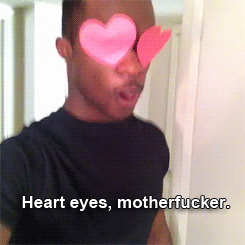



Painting I did based on this poem :)







Saint Judas Iscariot.
unknown // The Kiss of Judas by Jakob Smits, 1906 // The Last Days of Judas Iscariot, Steven Adly Guirgis


"𝙈𝙮 𝙢𝙞𝙣𝙙 𝙞𝙨 𝙘𝙡𝙚𝙖𝙧𝙚𝙧 𝙣𝙤𝙬…"








JUDAS ISCARIOT | Official Trailer
Judas Iscariot is an animated retelling of The New Testament of the Holy Bible, featuring details from the Apocrypha (The "Unofficial" Gospels) with a fresh stylized reinterpretation of the story's core figures. The goal of this project is to illuminate this text for both a religious and non-religious audience, placing it back into the historical context of Jesus’s role as a political figure during the Roman occupation of Judea. This film explores mature themes pertaining to love, devotion, and control. The film is expected to be 15-20 minutes long, depending on how much can be raised with the kickstarter campaign. It is expected to take 1-2 years to finish writing, storyboarding, animating, and painting assets for this project, with an additional period of time devoted to film festival screenings before it is ready for the public. Judas Iscariot will be the second short film written and directed by Charles Kugler, who has worked in the animation industry for clients like Adult Swim, Cartoon Network, and FOX.
Kickstarter campaign link:

was talking to my gf about my fear of dying young for being trans and my mom putting my deadname on my gravestone, and she said "i hope that never happens, but if it does, i will carve your name into your grave myself if i have to." and i think theres something extremely raw about that sentiment and trans community in general. you can kill only our bodies, but you cant kill transsexuality
TO THOSE MAKING NATIVE OCS
I see this a lot, no one has actual names, or any reference for names, that are legit Native American, varying among the tribes, for their characters.
Babynames.com and shit like that will give you names made up by white people.
However, I’ve got your solution.
Native-Languages is a good website to turn to for knowledge on a lot of native things, including native names. If you’re unsure about the names you’ve picked, they even have a list of made up names here!
Please don’t trust names like babynames.com for native names, they’re made up and often quite offensive to the cultures themselves.







BALLROOM BLITZØ
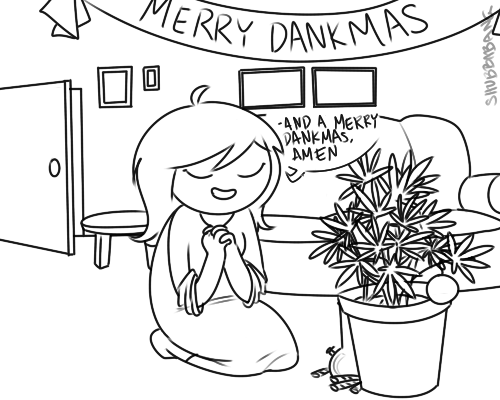
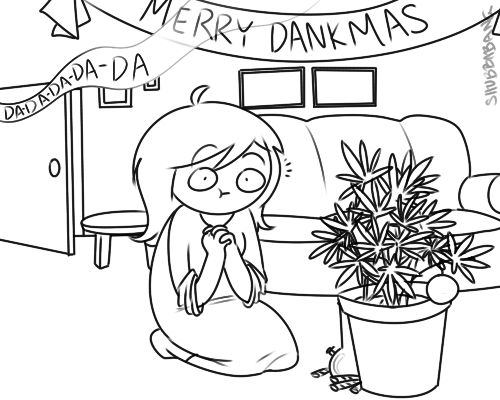
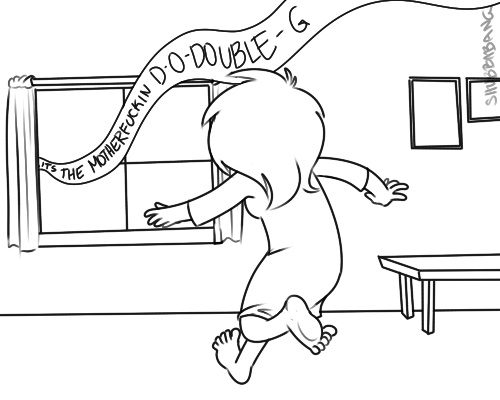
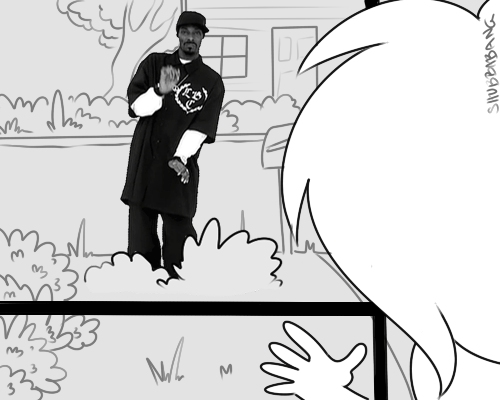
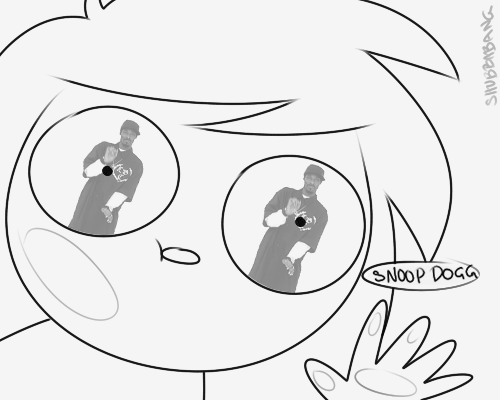
happy 420 and day i reserve a spot in hell
Lighter than a butterfly...









Disability representation!!
I was lazy and used old drawings for this
Anyways much love



Exercises for all the homies who want to have a long career drawing.
The true problem with being an artist and drawing all day (as I wanted my whole life) is that human backs are not designed to hold that position, so it is very common for artists and designers to have really stiff shoulder blades, creating a chain of muscle strain towards the arm AND the back… and a lot of pain.
These are some physical exercises for artists and honestly anyone who works at a desk.
(all credit to my physiotherapist)

150 meter aluminum sea serpent skeleton sculpture in Nantes, France. Artist Huang Yong Ping










it was not on wheat...
Alright, for the 100th time, all oppose of being thrown?
Non-Throwing Imps: Nayyyy
All in favor?
...
All in favor?
Non-Throwing Imps: They already said aye
So where are they?
Non-Throwing Imps: 60m down and still screaming.
me: if I become the evil overlord I will never harm my minions
[5 years later]
highly throwable imp: hoohoohee
me: hmm







Definitely one of the funniest parts of journal to me.
Bonus under cut:
Keep reading